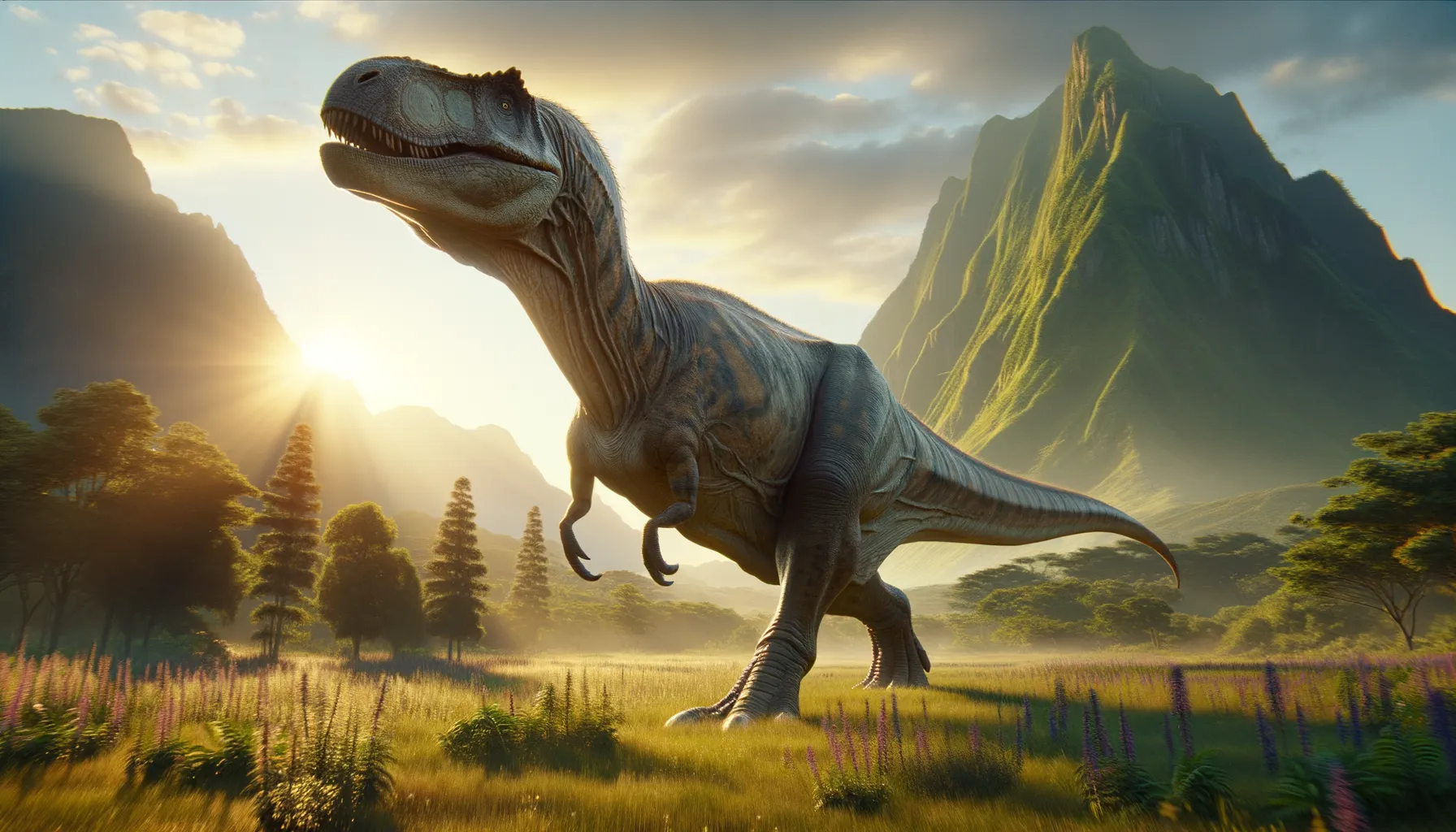
Diamantinasaurus
Titan of the Cretaceous outback!
Period
Cretaceous
Length
Reached lengths of about 16 meters.
Height
Stood approximately 3 meters tall at the shoulder.
Weight
Weighed up to 30 tons.
Diamantinasaurus was a large, herbivorous sauropod dinosaur that roamed the ancient landscapes of Australia during the Cretaceous period. Known for its massive size, it was part of the titanosaur group, characterized by long necks and sturdy, elephant-like legs. Its discovery in Australia helped shed light on the diversity and distribution of sauropods in Gondwana, the southern supercontinent.
Diet
Diamantinasaurus was a herbivore, feeding mainly on the abundant plant life of its time. Its diet likely included ferns, conifers, and other vegetation within reach of its long neck.
Hunting
Being a plant-eater, Diamantinasaurus did not hunt other animals. Instead, it spent its time grazing and foraging through dense forests and open plains.
Environmental challenges
Diamantinasaurus faced environmental challenges such as climate changes that affected food availability. As a large dinosaur, it needed substantial amounts of vegetation to sustain its energy needs. Additionally, it had to navigate the threats of predators, which would have been abundant during the Cretaceous period.
Speed
Likely moved at a slow pace.
Lifespan
Estimated at several decades.
First discovery
Discovered in Australia in the early 2000s.
Fun Facts
- Diamantinasaurus is named after the Diamantina River in Australia, where its fossils were discovered.
- This dinosaur lived during the mid-Cretaceous period, about 100 million years ago.
- Diamantinasaurus was a large herbivore, meaning it primarily ate plants.
- It belonged to a group of dinosaurs called sauropods, known for their long necks and massive bodies.
- The discovery of Diamantinasaurus helped scientists understand more about the diversity of sauropods in Australia.
- Unlike some of its relatives, Diamantinasaurus was relatively small, estimated to be around 15-16 meters long.
- Fossils of Diamantinasaurus have provided insights into the unique ecosystem that existed in ancient Australia.
Growth and Development
Diamantinasaurus likely experienced rapid growth rates, especially during its juvenile stages, to reach its massive size. Its development involved growing a sturdy skeleton capable of supporting its heavy body. Growth rings in its bones suggest a prolonged development period, with gradual increases in size over several years.
Habitat
Diamantinasaurus lived in a diverse habitat in what is now Australia, consisting of river systems, lush forests, and open plains. These environments provided ample food resources and space for these large creatures to thrive. Their habitat would have been a mix of wet and dry conditions, requiring adaptability to various climates.
Interaction with other species
Diamantinasaurus shared its environment with various other dinosaur species, likely including other herbivores and carnivores. It may have traveled in herds, offering protection against predators. Its interaction with other species was likely peaceful, revolving around grazing alongside other large herbivores.
Natural lifespan
Its natural lifespan was likely several decades.
Reproduction
Diamantinasaurus, like other sauropods, reproduced by laying eggs. Nests were likely constructed in safe, secluded areas to protect them from predators. Hatchlings would have been relatively undeveloped at birth, requiring rapid growth to ensure survival.
Social behaviour
Diamantinasaurus might have exhibited social behaviors typical of herd animals, such as collective movement and mutual protection from predators. Herding would have been advantageous for monitoring young and navigating large landscapes efficiently.
Fossil locations
Fossils of Diamantinasaurus have been primarily found in Queensland, Australia. These discoveries have considerably expanded knowledge about the distribution of sauropods in southern continents during the Cretaceous period. Its fossils are crucial to understanding the evolution and migration patterns of dinosaurs in Gondwanan regions.
